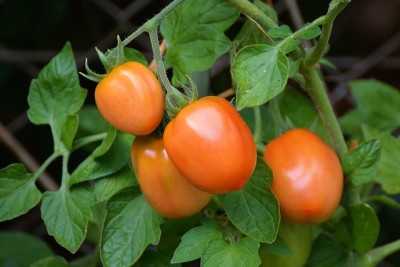Tomatoes are one of those things that just about everyone – from the most novice of gardeners to the most experienced – likes to grow.
So, it’s no wonder that new varieties are constantly being bred and that everyone and their neighbor has advice on how to grow the biggest, juiciest and most delicious tomatoes on the block.
We have combed through the advice and found seven of the best tips for getting an amazing tomato harvest this year:
Tip No. 1: Choose indeterminate varieties
If you are growing tomatoes in a compact space such as an apartment balcony, then you may want to choose determinate tomatoes, as these plants are compact and will stop growing once fruit begins to appear.
But if you’ve got the space and you’re looking for a big yield, it is best to choose indeterminate varieties, as they will continue growing and producing fruit throughout the season.
Tip No. 2: Plant horizontally
Especially for the new gardener, this tip may sound counterintuitive. But whether you have bought a plant from a nursery or whether you are transplanting your own seedlings, tomatoes do better when they have been planted in the ground horizontally.
To do this, dig a shallow trench and lay the seedling on its side, covering up all but the top leaves. (Remember to strip off any leaves on the parts of the stem that you are burying.)
Following this advice will help your tomato plant develop a bigger root ball – and that means more tomatoes for you!
Tip No. 3: Side-dress with compost
Side-dressing is simply adding more nutrients (fertilizer or compost) around your plants. Once your plants start to flower, side-dress them with about two inches of compost and the next time it rains or when you water your plants, nutrients from the compost will be carried to the roots.
You can repeat this process every three weeks or so.
Tip No. 4: Use seaweed
To be at their best, tomato plants require a lot of nutrients – and if you want to garden organically, then seaweed fertilizer is a good option. Seaweed contains nitrogen and many other important minerals such as iron, zinc and potassium. Fertilize your plants with a diluted seaweed or kelp solution every other week and it will help stimulate growth and fend off disease.
Seamazing: The Low-Cost Way To Re-mineralize Your Soil
Seaweed also can be used as a mulch near the bottom of your tomato plants. Keep in mind, however, that as it dries out it will shrink to about a quarter of its original size – so four inches of mulch will give you one inch once it has dried out. An advantage to using seaweed as a mulch is that because of its saltiness, it acts as a natural slug repellent.
Tip No. 5: Keep young plants warm
Tomato plants that are exposed to temperatures below 55 degrees Fahrenheit will not produce fruit. If you find you’ve planted your seedlings a bit too early, or if you get some surprise cool nighttime weather, protect your plants with row covers overnight until the weather warms up.
If you do not have row covers, you can improvise using some tomato cages and old blankets. Just be sure to uncover again in the morning.
Tip No. 6: Harvest regularly
The moment of truth in tomato gardening comes when the delicious fruit begins to ripen. Once it appears that you are close to getting a ripe tomato, check the vines every few days and harvest as necessary.
This will help your plants to produce higher yields because the plant’s energy will be focussed on producing new fruit rather than on tomatoes that are already ripe.
Tip No. 7: Rotate your crops
To help keep your plants free of disease, you should wait at least three years before planting them again in the same spot. Tomatoes can be rotated with unrelated crops like lettuce, beans and corn. They should not be rotated with other members of the nightshade family like potatoes, eggplants or peppers.
What tips would you add to our list? Share your thoughts in the section below:
 Off The Grid News Better Ideas For Off The Grid Living
Off The Grid News Better Ideas For Off The Grid Living





